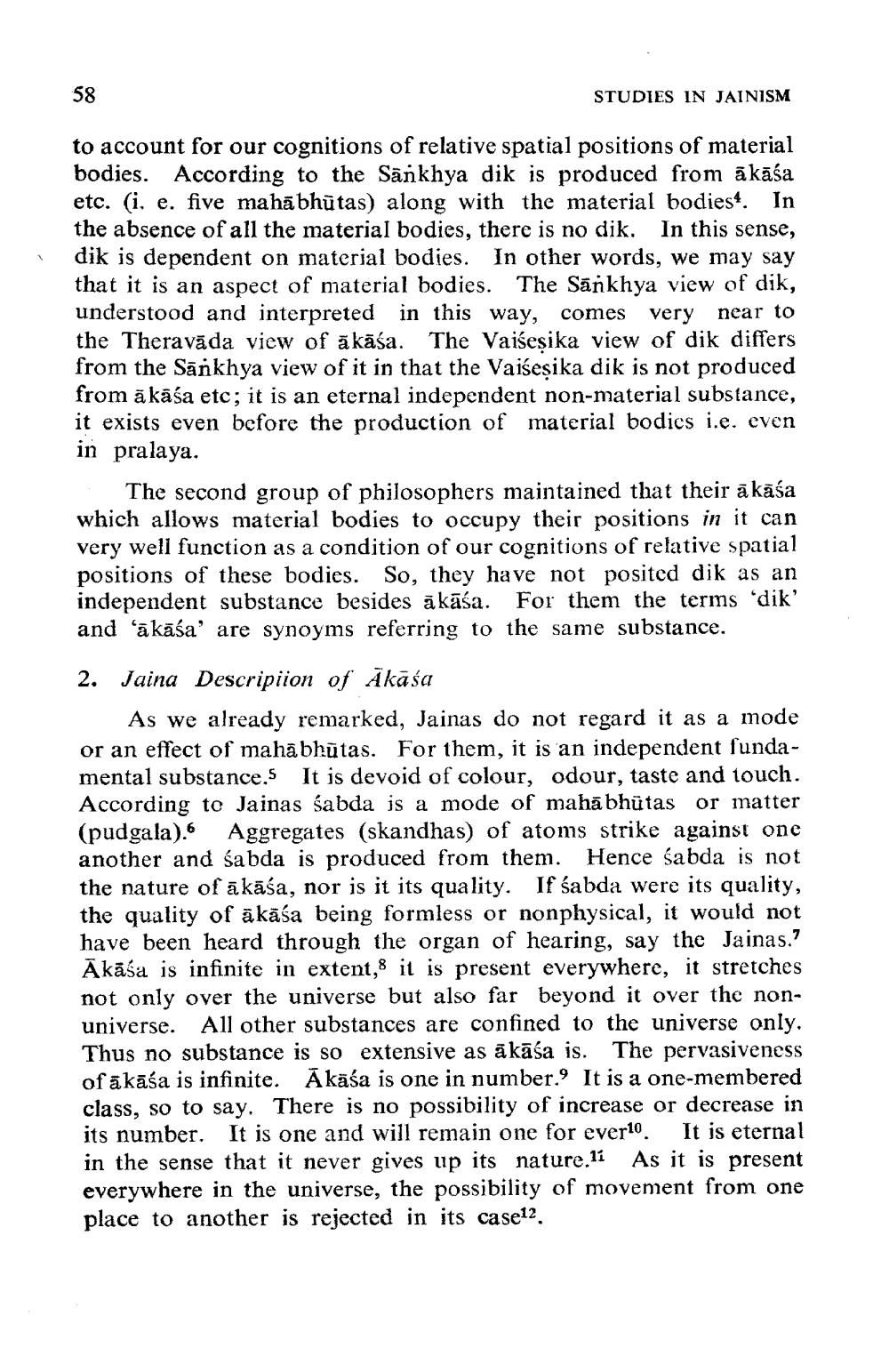________________
58
STUDIES IN JAINISM
to account for our cognitions of relative spatial positions of material bodies. According to the Sankhya dik is produced from ākāśa etc. (i, e. five mahābhūtas) along with the material bodies. In the absence of all the material bodies, there is no dik. In this sense, dik is dependent on material bodies. In other words, we may say that it is an aspect of material bodies. The Sānkhya view of dik, understood and interpreted in this way, comes very near to the Theravāda view of ā kāśa. The Vaišesika view of dik differs from the Sānkhya view of it in that the Vaibesika dik is not produced from ā kāśa etc; it is an eternal independent non-material substance, it exists even before the production of material bodics i.e. even in pralaya.
The second group of philosophers maintained that their ākāśa which allows material bodies to occupy their positions in it can very well function as a condition of our cognitions of relative spatial positions of these bodies. So, they have not posited dik as an independent substance besides äkāśa. For them the terms 'dik' and 'ākāśa' are synoyms referring to the same substance.
2. Jaina Descripiion of Äkāśa
As we already remarked, Jainas do not regard it as a mode or an effect of mahābhūtas. For them, it is an independent fundamental substance. It is devoid of colour, odour, taste and touch. According to Jainas sabda is a mode of mahābhūtas or matter (pud gala). Aggregates (skandhas) of atoms strike against one another and sabda is produced from them. Hence śabda is not the nature of ākāśa, nor is it its quality. If sabda were its quality, the quality of äkāśa being formless or nonphysical, it would not have been heard through the organ of hearing, say the Jainas.? Ākāśa is infinite in extent, it is present everywhere, it stretches not only over the universe but also far beyond it over the nonuniverse. All other substances are confined to the universe only, Thus no substance is so extensive as ākāśa is. The pervasiveness of ākāśa is infinite. Akasa is one in number. It is a one-membered class, so to say. There is no possibility of increase or decrease in its number. It is one and will remain one for ever10. It is eternal in the sense that it never gives up its nature.11 As it is present everywhere in the universe, the possibility of movement from one place to another is rejected in its case12




